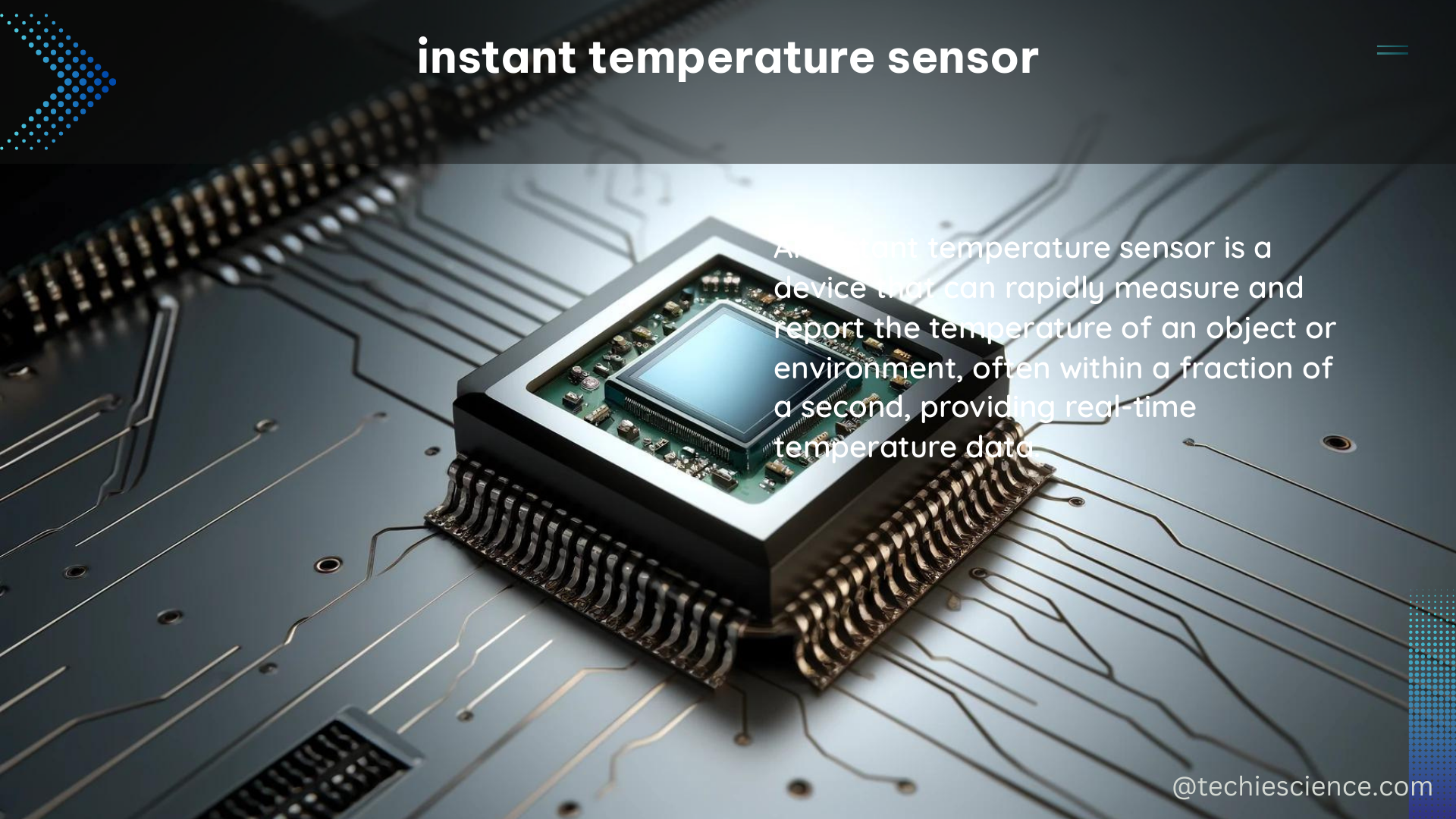Instant temperature sensors are essential tools for accurately measuring and monitoring temperature in a wide range of applications, from industrial processes to scientific research. These sensors offer rapid response times, high precision, and the ability to provide real-time data, making them invaluable for applications that require immediate temperature feedback. In this comprehensive guide, we will delve into the intricacies of instant temperature sensors, exploring their accuracy, uncertainty, and the various types available.
Accuracy and Uncertainty in Instant Temperature Sensors
Accuracy and uncertainty are critical factors when it comes to temperature measurement. The total uncertainty of a temperature measurement is a combination of the measurement itself and an estimate of the uncertainty. This uncertainty can arise from various sources, including:
- Thermal Noise: Thermal noise, also known as Johnson-Nyquist noise, is the random fluctuation of voltage across a resistor due to the thermal agitation of charge carriers.
- Thermal Voltages and Zero Drift: Thermal voltages can be generated at the junctions of dissimilar metals, leading to measurement errors. Zero drift refers to the gradual shift in the sensor’s output over time, even in the absence of temperature changes.
- Electromagnetic Noise: Electromagnetic interference (EMI) from nearby electrical equipment can introduce noise into the sensor’s output, affecting the accuracy of the measurement.
- Calibration Uncertainty: The accuracy of the sensor’s calibration process can contribute to the overall uncertainty of the measurement.
- Interpolation Uncertainty: When using a sensor’s calibration curve to interpolate between calibration points, there is an inherent uncertainty in the interpolated values.
- Combined Uncertainties: The combined effect of these individual uncertainties can significantly impact the overall accuracy of the temperature measurement.
To minimize the temperature measurement uncertainty, it is crucial to balance the uncertainties due to self-heating and output signal measurement. Self-heating occurs when the sensor dissipates power, causing a localized temperature rise that can affect the accuracy of the measurement. Careful design and selection of the sensor’s power supply and signal conditioning circuitry can help mitigate these uncertainties.
Types of Instant Temperature Sensors

There are several types of instant temperature sensors, each with its own unique characteristics and applications:
- Thermocouples:
- Thermocouples are based on the Seebeck effect, where the junction of two dissimilar metals generates a voltage proportional to the temperature difference.
- They offer a wide temperature range, fast response times, and are relatively inexpensive.
-
Thermocouples do not require a power supply to operate, making them suitable for remote or hazardous environments.
-
Optical Pyrometers:
- Optical pyrometers measure the infrared radiation emitted by an object to determine its temperature.
- They are non-contact sensors, allowing for temperature measurement of moving or inaccessible objects.
-
Optical pyrometers are commonly used in high-temperature applications, such as metal processing and furnace monitoring.
-
Resistance Temperature Detectors (RTDs):
- RTDs are based on the principle that the electrical resistance of a metal (typically platinum) changes with temperature.
- They offer high accuracy, good stability, and a wide temperature range.
-
RTDs require a current or voltage supply to operate, making them more complex than thermocouples.
-
Semiconductor Probes:
- Semiconductor probes, such as thermistors and integrated circuit (IC) temperature sensors, are temperature-variable resistance devices.
- They convert the change in resistance to a change in current or voltage, which can be measured and converted to temperature.
- Semiconductor probes are compact, inexpensive, and offer good accuracy, but they have a more limited temperature range compared to other sensor types.
Discrete and Continuous Temperature Data
Temperature sensors can provide two types of data: discrete and continuous.
- Discrete Data:
- Discrete data is countable and not necessarily fixed, meaning it can change over time.
-
Examples of discrete temperature data include the number of times a temperature threshold is exceeded or the number of temperature spikes within a given time period.
-
Continuous Data:
- Continuous data can fluctuate over time and is not limited to a fixed set of values.
- Continuous temperature data can be further classified into:
- Interval Data: Interval data can be measured along a continuum, where there is an equal distance between each point on the scale. However, interval data has no true or meaningful zero value.
- Ratio Data: Ratio data has a true zero, allowing for meaningful comparisons and calculations.
Understanding the nature of the temperature data (discrete or continuous) is crucial for selecting the appropriate sensor and data analysis techniques.
Conclusion
Instant temperature sensors are essential tools for accurate and real-time temperature measurement in a wide range of applications. By understanding the factors that contribute to the accuracy and uncertainty of these sensors, as well as the different types available, you can make informed decisions when selecting the right instant temperature sensor for your specific needs. Whether you require discrete or continuous temperature data, this comprehensive guide has provided you with the necessary knowledge to navigate the world of instant temperature sensors and make the most of their capabilities.
References:
- Detection and quantification of temperature sensor drift using probabilistic neural networks: https://www.sciencedirect.com/science/article/pii/S0957417422019029
- Appendix E: Temperature Measurement System: https://www.lakeshore.com/docs/default-source/temperature-catalog/lstc_appendixe_l.pdf?sfvrsn=b5177ae1_8
- An Algorithm for Sensor Data Uncertainty Quantification: https://www.researchgate.net/publication/357012758_An_Algorithm_for_Sensor_Data_Uncertainty_Quantification
- What is Quantitative Data? [Definition, Examples & FAQ]: https://careerfoundry.com/en/blog/data-analytics/what-is-quantitative-data/
- Temperature Measurement – MST.edu: https://web.mst.edu/~cottrell/me240/resources/temperature/temperature.pdf

The lambdageeks.com Core SME Team is a group of experienced subject matter experts from diverse scientific and technical fields including Physics, Chemistry, Technology,Electronics & Electrical Engineering, Automotive, Mechanical Engineering. Our team collaborates to create high-quality, well-researched articles on a wide range of science and technology topics for the lambdageeks.com website.
All Our Senior SME are having more than 7 Years of experience in the respective fields . They are either Working Industry Professionals or assocaited With different Universities. Refer Our Authors Page to get to know About our Core SMEs.